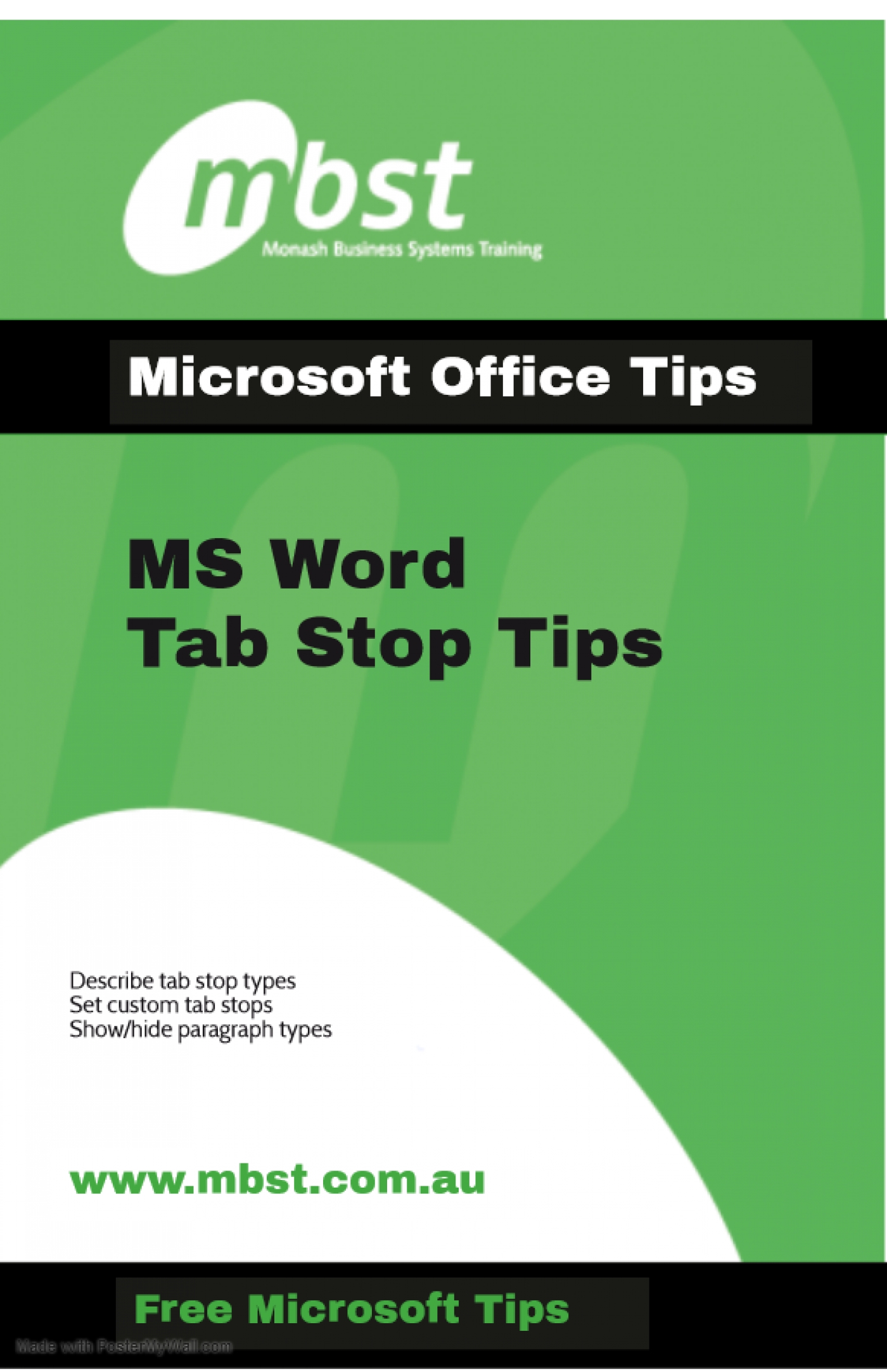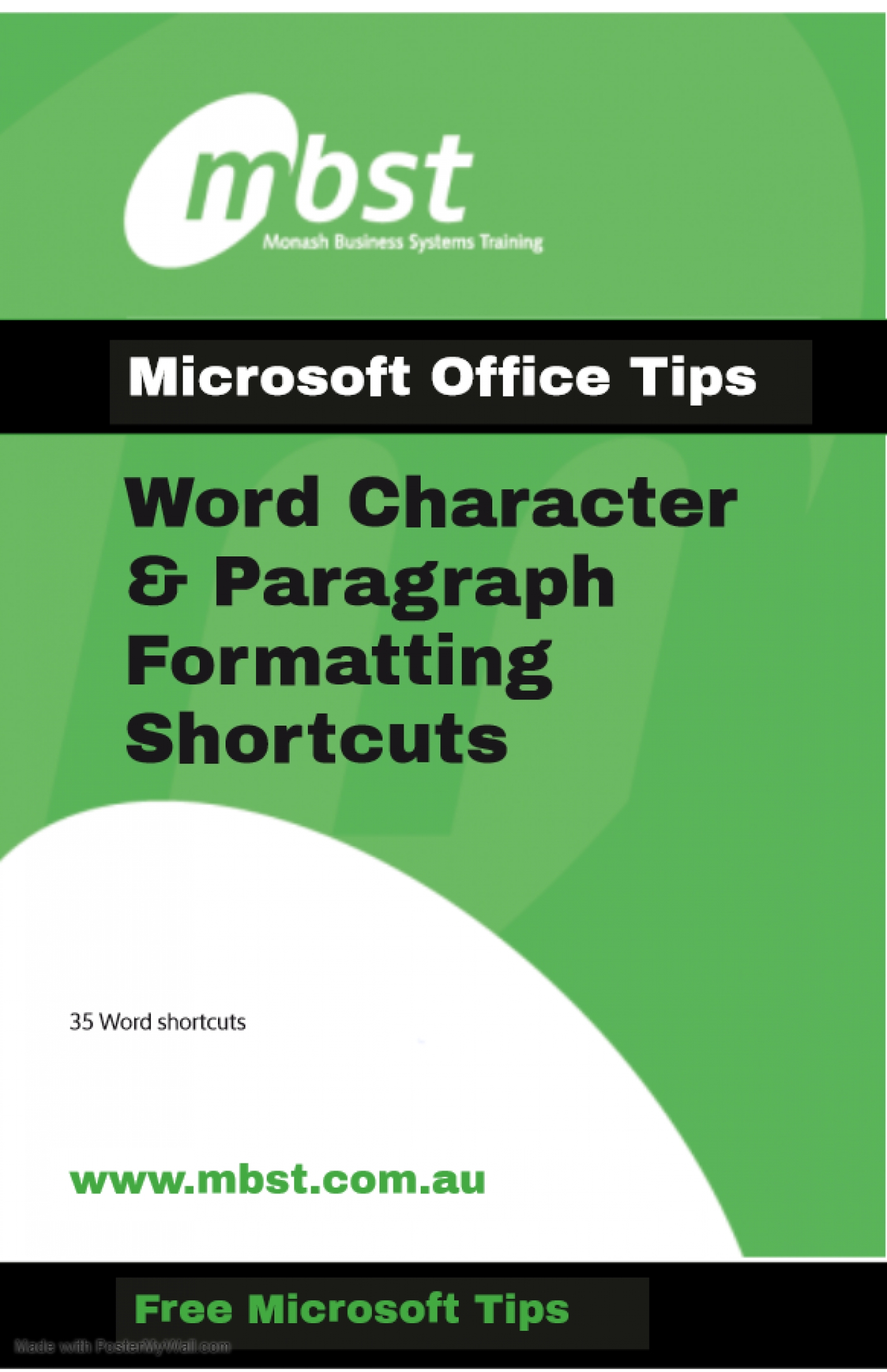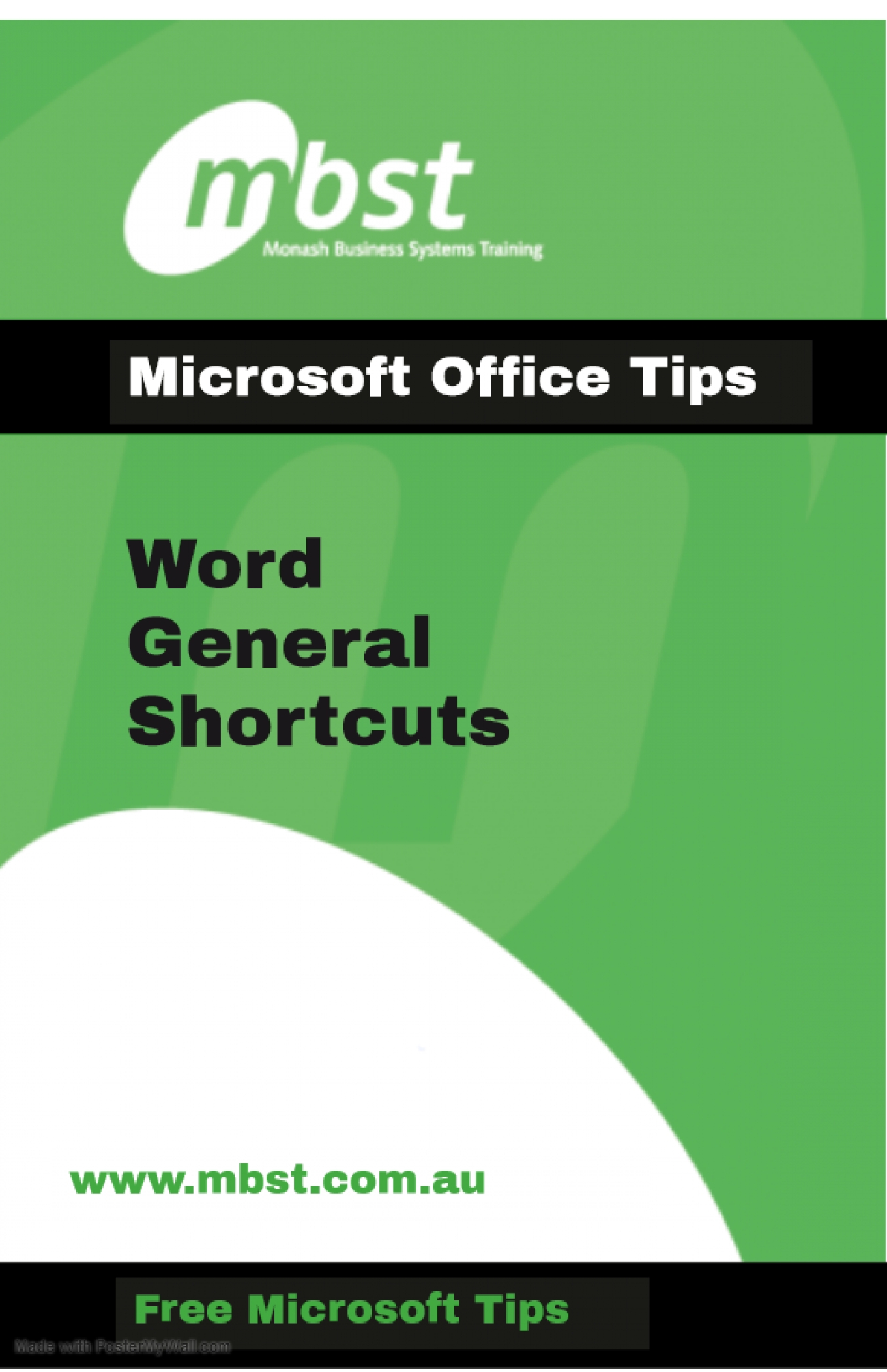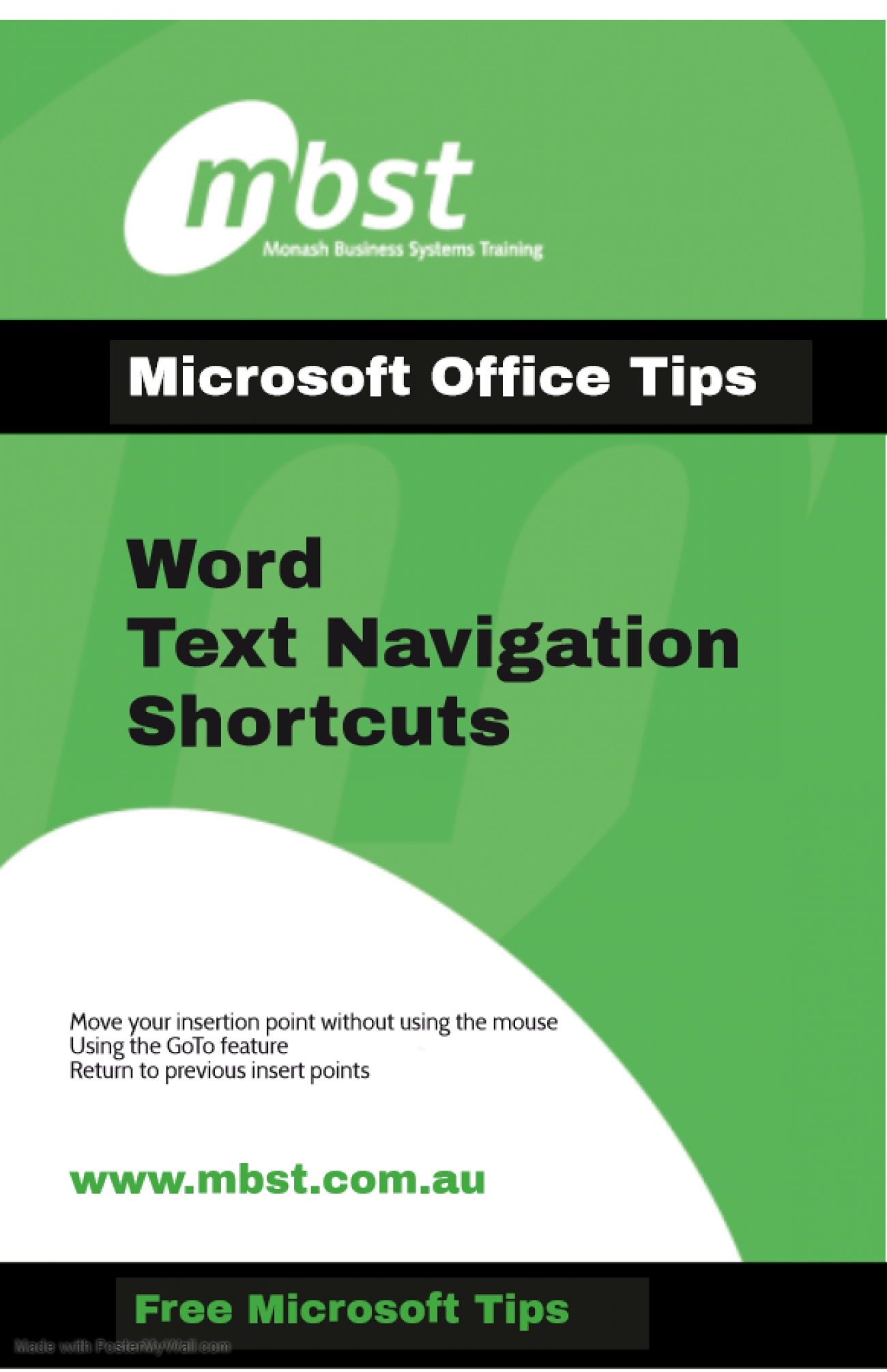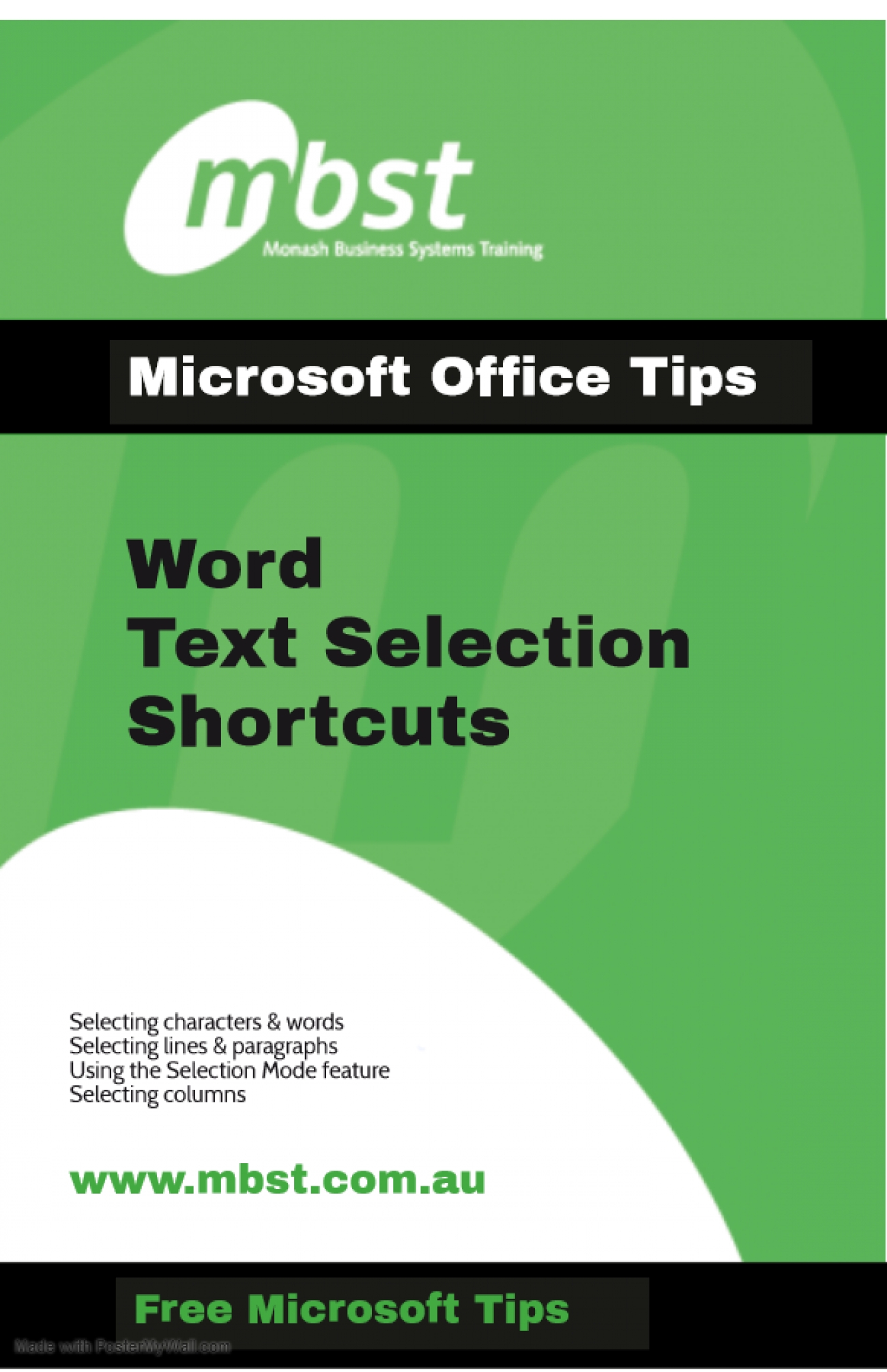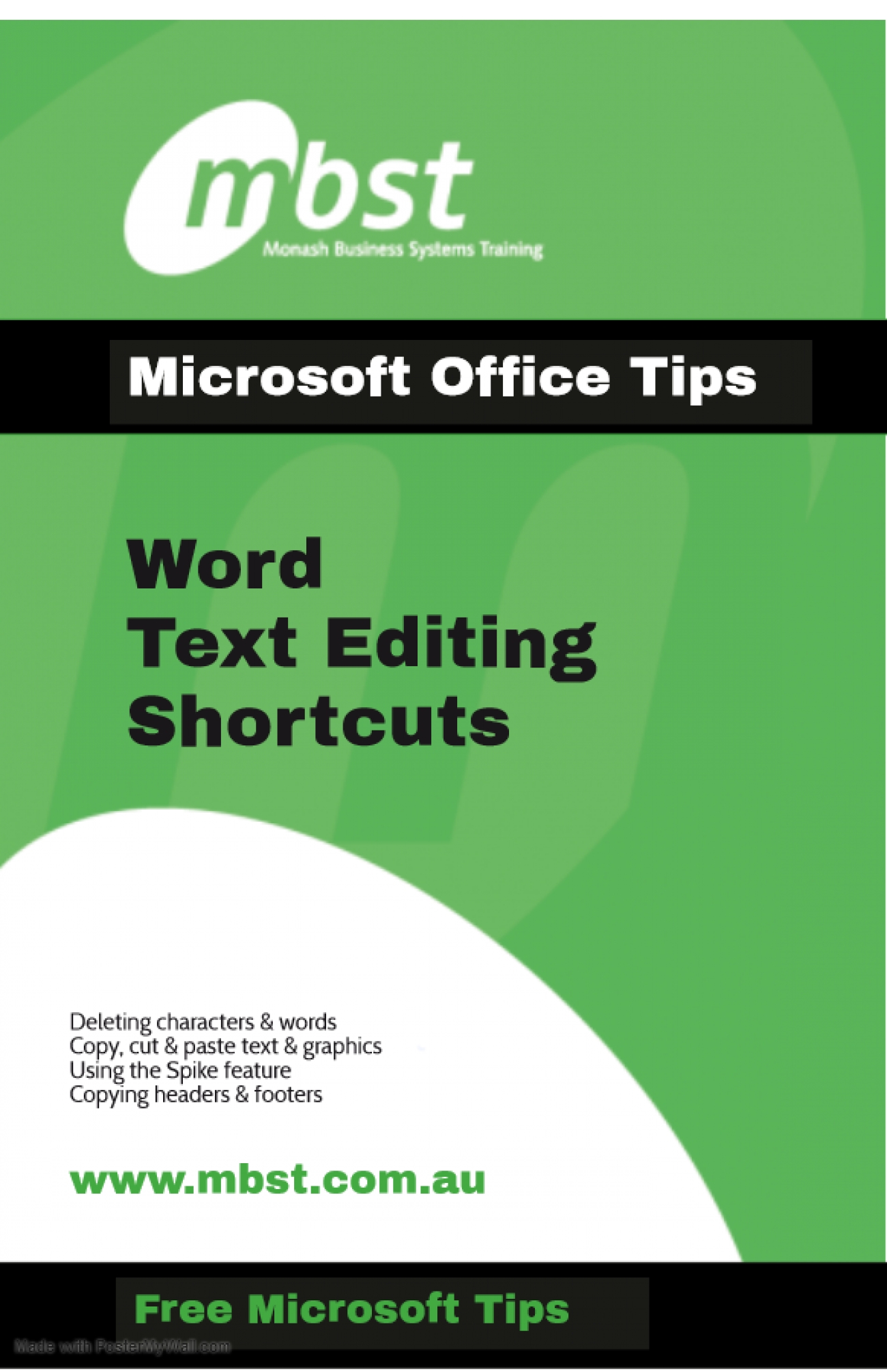
Microsoft Word (6)
If your text look a little disorganised in your Word document, you may want to use Tab Stops to align the text into neat columns. You can use tabs instead of putting text into tables and then hiding the borders. You can set them on the horizontal ruler at the top of the page. (If you can’t see your ruler, go to View > Show grouping > Ruler and tick the checkbox).
There are 5 different tab stops, each with different properties:
- Left – aligns the left edge of the text with the tab stop.
- Centre – centres the text under the tab stop.
- Right – aligns the right edge of the text with the tab stop.
- Decimal – aligns any decimal point under the tab stop.
- Bar –automatically inserts a vertical line under the tab stop.
Set up your tabs using the Tab Alignment button to the far left of your ruler. The button shows the type of tab you will insert. Hover over the tab stop for a second and Word will give you a Tip as to which one it is set. To select a different type of tab to place, click on the Tab Alignment button and it will scroll through the various tabs and indent markers. (We’ll leave the indent markers until another time).
To set a custom tab on the ruler:
- Select the text you want to set the tab stops for.
- Click the Tab Alignment button to select the type of tab you want to use.
- Select the location of your tab stop on the ruler.
There is another button I use frequently when setting and sorting out my tab stops and that is in the Home tab > Paragraph grouping > Show/Hide button to display my paragraph marks. (The one that looks like a reverse P). It show my tab markers and helps me to tidy up messy text.
One final tip on moving tabs is that you can simply drag your tabs to a new location on the ruler. It is important to remember that you need to select the whole paragraph or pieces of text for which you want the tabs to move. The tabbed text moves with the tab stop so you can see how the change will affect your text.
Also read Quickly Apply Formats to Text
MS Word Character & Paragraph Formatting Shortcuts
Written by Diana AngenentWord also has loads of keyboard combos for applying character formatting.
Applying Character Formatting
You can use the shortcuts to apply formatting to selected text or to whatever you type next if no text is selected.
- Ctrl+B: Apple bold formatting
- Ctrl+I: Apply italic formatting
- Ctrl+U: Apply underline formatting
- Ctrl+Shift+W: Apply underline formatting to words, but not the spaces between words
- Ctrl+Shift+D: Apply double underline formatting
- Ctrl+D: Open the Font dialog box
- Ctrl+Shift+< or >: Decrease or increase font size one preset size at a time
- Ctrl+[ or ]: Decrease or increase font size one point at a time
- Ctrl+=: Apply subscript formatting
- Ctrl+Shift+Plus key: Apply superscript formatting
- Shift+F3: Cycle through case formats for your text. Available formats are sentence case (capital first letter, everything else lower case), lowercase, uppercase, title case (first letter in each word capitalized), and toggle case (which reverses whatever’s there).
- Ctrl+Shift+A: Formats all letters as uppercase
- Ctrl+Shift+K: Formats all letters as lowercase
- Ctrl+Shift+C: Copies the character formatting of a selection
- Ctrl+Shift+V: Pastes formatting onto selected text
- Ctrl+Space: Removes all manual character formatting from a selection
Applying Paragraph Formatting
And just like with character formatting, Word has a bunch of shortcuts particular to formatting paragraphs.
- Ctrl+M: Increases a paragraph’s indent one level each time you press it
- Ctrl+Shift+M: Reduces a paragraph’s indent one level each time you press it
- Ctrl+T: Increases a hanging indent each time you press it
- Ctrl+Shift+T: Reduces a hanging indent each time you press it
- Ctrl+E: Center a paragraph
- Ctrl+L: Left-align a paragraph
- Ctrl+R: Right-align a paragraph
- Ctrl+J: Justify a paragraph
- Ctrl+1: Set single-spacing
- Ctrl+2: Set double-spacing
- Ctrl+5: Set 1.5 line Spacing
- Ctrl+0: Remove one line spacing preceding a paragraph
- Ctrl+Shift+S: Open a popup window for applying styles
- Ctrl+Shift+N: Apply the normal paragraph style
- Alt+Ctrl+1: Apply the Heading 1 style
- Alt+Ctrl+2: Apply the Heading 2 style
- Alt+Ctrl+3: Apply the Heading 3 style
- Ctrl+Shift+L: Apply the List style
- Ctrl+Q: Remove all paragraph formatting
Also read Word Text Selection Shortcuts
There are many general program shortcuts in Microsoft Word that make it easier for you to do everything from save your document to undo a mistake.
- Ctrl+N: Create a new document
- Ctrl+O: Open an existing document
- Ctrl+S: Save a document
- F12: Open the Save As dialog box
- Ctrl+W: Close a document
- Ctrl+Z: Undo an action
- Ctrl+Y: Redo an action
- Alt+Ctrl+S: Split a window or remove the split view
- Ctrl+Alt+V: Print Layout View
- Ctrl+Alt+O: Outline View
- Ctrl+Alt+N: Draft View
- Ctrl+F2: Print Preview View
- F1: Open the Help pane
- Alt+Q: Go to the “Tell me what you want to do” box
- F9: Refresh the field codes in the current selection
- Ctrl+F: Search a document
- F7: Run a spelling and grammar check
- Shift+F7: Open the thesaurus. If you have a word selected, Shift+F7 looks up that word in the thesaurus.
Also read Word Text Navigation Shortcuts.
You can use keyboard shortcuts to easily navigate throughout your document. This can save time if you have a long document and don’t want to scroll through the entire thing, or simply want to easily move between words or sentences.
If you think of the CTRL key as a booster key, these shortcuts are easier to remember.
- Left/Right Arrow: Move the insertion point (cursor) one character to the left or right
- Ctrl+Left/Right Arrow: Move one word to the left or right
- Up/Down Arrow: Move up or down one line
- Ctrl+Up/Down Arrow: Move up or down one paragraph
- End: Move to the end of the current line
- Ctrl+End: Move to the end of the document
- Home: Move to the beginning of the current line
- Ctrl+Home: Move to the beginning of the document
- Page Up/Page Down: Move up or down one screen
- Ctrl+Page Up/Page Down: Move to the previous or next browse object (after performing a search)
- Alt+Ctrl+Page Up/Page Down: Move to the top or bottom of the current window
- F5: Open the Find dialog box with the “Go To” tab selected, so you can quickly move to a specific page, section, bookmark, and so on.
- Shift+F5: Cycle through the last three locations where the insertion point was placed. If you just opened a document, Shift+F5 moves you to the last point you were editing before closing the document.
Also read Word Text Selection Shortcuts.
Utilise the Shift key to easily select text.
You may have read a previous blog, that the arrow keys are used for moving your insertion point around, and the CTRL key is used to modify that movement. Using the Shift key to modify a lot of those key combos lets you select text in different ways.
- Shift+Left/Right Arrow: Extend your current selection by one character to the left or right
- Ctrl+Shift+Left/Right Arrow: Extend your current selection by one word to the left or right
- Shift+Up/Down Arrow: Extend selection up or down one line
- Ctrl+Shift+Up/Down Arrow: Extend selection to the beginning or end of the paragraph
- Shift+End: Extend selection to the end of the line
- Shift+Home: Extend selection to the beginning of the line
- Ctrl+Shift+Home/End: Extend selection to the beginning or end of the document
- Shift+Page Down/Page Up: Extend selection down or up one screen
- Ctrl+A: Select the entire document
- F8: Enter selection mode. While in this mode, you can use the arrow keys to extend your selection. You can also press F8 up to five times to extend the selection outward. The first press enters selection mode, the second press selects the word next to the insertion point, the third selects the whole sentence, the fourth all the characters in the paragraph, and the fifth the whole document. Pressing Shift+F8 works that same cycle, but backwards. And you can press Esc any time to leave selection mode. It takes a little playing with to get the hang of it, but it’s pretty fun!
- Ctrl+Shift+F8: Selects a column. Once the column is selected, you can use the left and right arrow keys to extend the selection to other columns.
Also read Word Text Navigation Shortcuts.
To start utilising shortcuts in Microsoft Applications, try just one to start with and introduce a new one each week. Before long you'll be using so many shortcuts you'll notice a real difference in your productivity.
- Backspace: Delete one character to the left
- Delete: Delete one character to the right
If you delete words or phrases by using the backspace key repeatedly, avoid RSI by trying the following shortcut to delete full words. Over the coming week, every time you need to delete a full word, try using the CTRL key. Just think of the CTRL key as a booster key.
- Ctrl+Backspace: Delete one word to the left
- Ctrl+Delete: Delete one word to the right
Word also provides a number of keyboard shortcuts for editing text.
- Ctrl+C: Copy or graphics to the Clipboard text
- Ctrl+X: Cut selected text or graphics to the Clipboard
- Ctrl+V: Paste the Clipboard contents
The Spike feature is an interesting variant on the regular clipboard. You can keep cutting text to the Spike and Word remembers it all. When you paste the Spikes contents, Word pastes everything you cut, but places each item on its own line.
- Ctrl+F3: Cut selected text to the Spike
- Ctrl+Shift+F3: Paste the Spike contents
Easily copy the header and footers.
- Alt+Shift+R: Copy the header or footer used in the previous section of the document

